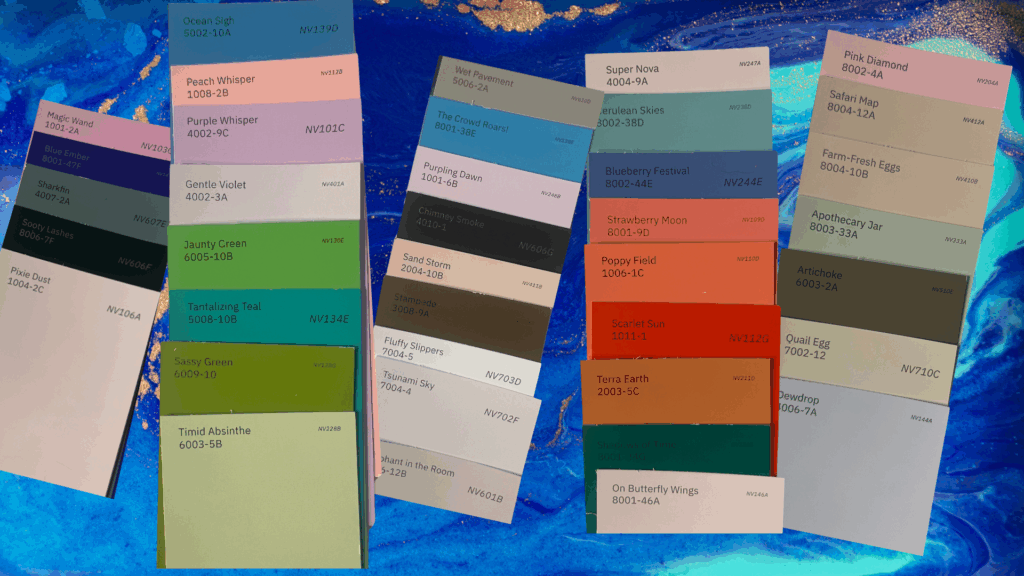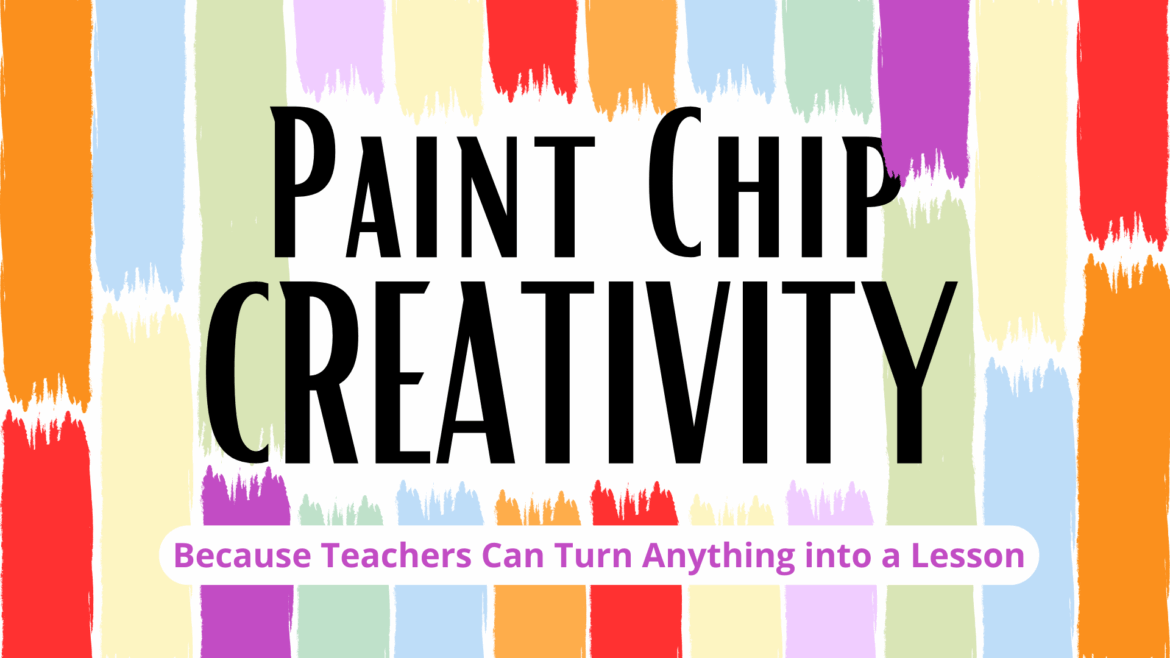Looking for clever student writing activities that add color, creativity, and curiosity to your lesson plan? Here’s one teacher-approved idea that turns a free resource into a powerhouse of storytelling magic.
It all started in a conversation with my creative friend Marianna, a fellow teacher with a gift for turning the ordinary into something extraordinary. She casually mentioned a writing activity she does with paint chips—and I was instantly hooked. You know those free color cards you find at the hardware store? Some folks call them paint swatches, color samples, or paint sample cards—but whatever you call them, they’re bursting with inspiration.
And honestly, isn’t that just the most teacher thing ever? Y’all are so clever. You can look at a recycled item, a dollar store find, or a piece of packaging and think: How can I turn this into a lesson?
So, huge thanks to Marianna for the spark behind this post. Let me show you how she transforms a humble paint chip into a launchpad for student stories.

How to Turn Paint Chips into a Writing Activity
1. Collect the Goods
Swing by your local paint store (or big-box home improvement spot) and grab a variety of paint chip cards—for free! Pick ones with fun, imaginative names. Marianna admits she spends way too long admiring names like Purple Phantom and Fields of Heather—and honestly, who wouldn’t?
Peggy’s tip: Get in good with the paint store employee! Ask when they rotate out discontinued colors—some stores are happy to hand over entire decks of outdated paint chips if you catch them at the right time. More colors, more inspiration, and zero cost.
Bonus: Let students create their own paint chip names later on!
2. Introduce the Possibilities
Read a few names aloud and ask students what they think they could be:
- Setting? (Spun Moonbeams, Cactus Bloom)
- Character? (Purple Phantom, Timid Absinthe)
- Magical Object or Power? (Whispering Willow, Sunken Treasure)
- Let them sort the paint chips into categories like:
- Main characters
- Sidekicks
- Settings
- Plot twists
- Problem/Solution
- Magical abilities
- Pets
- Villains
- And of course—Marianna’s personal favorite—Dragon Names
3. Create and Sort
Students work in pairs or small groups to:
- Sort their paint chips by story element
- Defend their choices (“Why is Sweet Clover a dragon name and not a setting?”)
- Label categories on the back (optional, but makes for a great reuse system!)
4. Write with Colorful Prompts
Now that the paint chips are sorted, you’ve got multiple ways to spark writing:
- Pick one from each story element and write a story using them all
- Flip the chips over, select categories first, and see what names you get
- Draw from one category and write a quick poem, comic, or description
- Or do a class challenge: “Write about Spun Moonbeams the hamster in a haunted setting!”
5. Keep It Going All Year
Hole punch the chips, toss them on binder rings by category, and hang them around the room. They become instant go-to tools for:
- Quick writes
- Early finisher activities
- Writer’s block breakers
- Poetry starters
- Vocabulary expansion
Want to take it digital? Try tools like Book Creator to help students to collect their stories, narrate, draw, and bring their paint chip tales to life.
6. Tech Add-Ons for Paint Chip Writing
Digital Publishing with Book Creator
Turn your paint chip story into a digital book—and don’t forget to narrate it with your most dramatic voice!”
- Record their voices reading their stories
- Draw illustrations for their paint chip characters
- Add photos of the paint chips they used
Use Canva to Design Paint Chips
Let students design their own paint chip cards:
- Assign a made-up paint name (Dragon Fog, Blazing Banana)
- Choose the color and add a short character bio or setting description
- Grab the ready-to-use Canva paint chip template to make this activity even easier. Students can personalize, print, or keep them in their digital journals!
Collaborative Paint Chip Story Wall with Padlet
Use Padlet to create a shared virtual wall where students can:
- Upload photos of their favorite paint chips
- Write short blurbs explaining how they’d use the name (e.g., Blazing Banana = dragon sidekick with fire breath that smells like fruit)
- Comment on each other’s ideas to build collaborative story starters
Whether you’re working with young writers or seasoned storytellers, paint chips are a colorful, creative way to spark imagination without spending a dime. From character creation to plot twists, there’s no end to what your students can dream up with a little color and a lot of curiosity. So grab a handful of paint chips, pull out the binder rings, and let your classroom storytelling take a vibrant new turn. And, if your students invent the perfect dragon name, I’ll even pass it on to Marianna.

